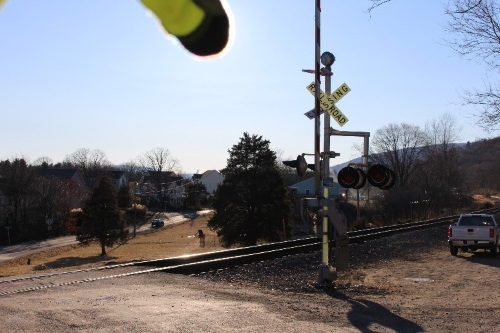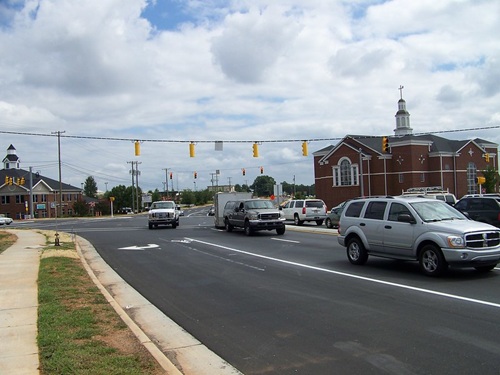During a special summit on railroad grade crossing safety hosted by the Federal Railroad Administration on Oct. 30 in Washington, D.C., USDOT Secretary Elaine Chao said that “statistics show that progress has leveled off the last 5 years” in regards to reducing railroad grade crossing crashes involving trains and motor vehicles.
[Above photo by NTSB.]
“So, I have asked the FRA—along with the Federal Highway Administration, Federal Transit Administration, Federal Motor Carrier Safety Administration, and the National Highway Traffic Safety Administration – to collaborate in devising new strategies to further improve safety around grade crossings,” she noted in her written remarks. “Success will require infrastructure improvements. It will also require new communications tools to get the word out about the dangers at railroad crossings. The communications goal is to change people’s behavior and make them aware of how difficult it is for a train to stop.”

Chao said that data indicates that only 32 of the more than 2,100 railroad grade crossing collisions in 2017 involved failure of automatic warning devices. “That means every day, drivers, pedestrians and others are making dangerous, reckless decisions to try and ‘beat’ trains,” she stressed. “Those who ignore the signals are classified as trespassers, just like those who are illegally in the rail right of way. So, year-round public awareness campaigns will be the keys to reducing dangerous trespassing.”
To further that communication effort, Chao said NHTSA and FRA spent $4.3 million on an advertising campaign called “Stop. Trains Can’t,” which USDOT will continue to fund in 2019 with an additional $4.5 million.
She also noted that FRA is working with USDOT’s Intelligent Transportation System Joint Program Office, other modes, and the private sector to make grade crossings safer.

“The goal is to keep grade crossing safety a part of the ongoing conversation about the development of intelligent or autonomous vehicles,” Chao explained. “How should cars, buses and trucks communicate with grade crossings? How can this technology be used to make grade crossings safer and prevent drivers from violating crossing warnings? The FRA has committed $1.9 million to this project to date, with an additional $514,000 allocated for fiscal year 2019. The men and women of the FRA, and the rest of the Department of Transportation are working hard to enable innovation that can improve railroad crossing safety.”
State departments of transportation also continue to work on their own railroad grade crossing safety initiatives, illustrated by the programs at New York State DOT, the California DOT, and the Iowa DOT.

The Iowa DOT noted that while a railroad owns the track, the roadway at a crossing is owned by either a public or private entity – and that crossing “ownership” includes management of safety protocols as well.
“Public crossings are those at which the highway or roadway is under the jurisdiction of and maintained by a public authority such as a city, county or state,” the agency noted. “Private crossings are those in which the roadway is privately owned, as you might find on a farm or within an industrial complex, where the road is not intended for public use. The roadway owner, whether public or private, typically maintains the road approaching the crossing on either side of the tracks. The Iowa DOT maintains programs that only apply to public, not private, crossings.”
 Top Stories
Top Stories


